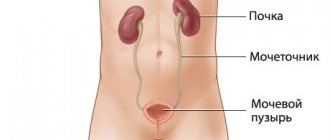Catarrhal tonsillitis - almost everyone is familiar with this disease. This infectious disease in medicine is called acute tonsillitis. Catarrhal sore throat in adults is a sore throat in the usual sense. This disease proceeds according to the classical scheme, and is quite easy to treat, but only if it is not neglected and you consult a doctor in time, and do not try to prescribe therapy for yourself. Otherwise, even the mildest form of sore throat can lead to serious consequences.
The disease is a disease with a high degree of contagiousness, that is, it is very easy to become infected: just drink from the patient’s cup or use his towel. Moreover, the first symptoms of catarrhal tonsillitis can occur several hours after contact with the patient. On average, the incubation period of the disease lasts from one to four days.
The peak of disease outbreaks occurs in autumn and winter. It is at this time that the body’s defenses decrease, the immune system weakens, and sometimes a slight hypothermia or a stressful situation in combination with the entry of a pathogen into the body is enough to trigger the inflammation mechanism.
Description of the disease
Catarrhal tonsillitis is clinically the mildest form of the inflammatory process that can occur in the palatine tonsils.
In pediatrics, it occurs in children aged 6 months to 18 years. The disease responds well to drug treatment if you consult a doctor in a timely manner. The pathology belongs to the group of tonsillitis. The palatine tonsils are the first barrier to the penetration of infection deeper into the respiratory tract, and therefore are often affected by the inflammatory process. Depending on the nature of the disease, angina can be acute or chronic. The severity of the inflammatory process varies.
- Catarrhal sore throat. This is the mildest form, in which the child’s general well-being deteriorates slightly.
- Follicular. The pathological process is accompanied by a pronounced disturbance of well-being.
- Lacunarnaya. This is a severe variant of follicular tonsillitis with high fever and massive damage to the tonsils.
- Membranous-necrotic. A critical condition that can cause acute airway obstruction.
Catarrhal tonsillitis in children can occur without complications (94-95% of cases) or with the development of undesirable consequences - tonsillar abscesses, exacerbation of chronic diseases, and the addition of a secondary infection.
Frequent catarrhal tonsillitis at an early age indicates a reduced barrier function of the tonsils. This threatens the process becoming chronic with the formation of a persistent focus of infection in the pharynx. A possible result of this development of events is acute rheumatic fever with damage to the heart. In particular, the heart valves suffer, and intracardiac hemodynamic disturbances (stenosis, regurgitation) occur.
The best way to prevent complications from occurring is to promptly contact an ENT doctor if you have any suspicious symptoms.
Forms
When a pathogenic microorganism enters and penetrates the mucous membrane, bacteria begin to multiply there. When a high concentration of harmful microorganisms is reached, intoxication occurs, which is characterized by swelling and inflammation. Cell walls lose their permeability, and pressure in the blood vessels increases.
As the disease develops, exudate begins to come out in the form of serous fluid or mucus. When there is swelling, this fluid collects in the nasal passages, preventing normal breathing. This condition facilitates the penetration of a secondary infection, which provokes the formation and discharge of pus from the nose.
There are various forms of the disease, which depend on in which sinus the inflammation begins:
- Sinusitis. Occurs with inflammation in the maxillary sinus, characterized by nasal congestion, but not complete, but partial, which is explained by the connection with the maxillary canals. The process spreads to the two sinuses, making breathing difficult, which contributes to the development of laryngeal infections.
- Catarrhal sinuses affect the frontal sinuses. Develops as a result of infection entering the circulatory system. In addition to the swollen mucous membrane, there is pain throughout the day, in particular in the forehead area. In the evening the patient feels better. The main symptoms of this form of the disease are the production of tears and photophobia.
- Catarrhal ethmoiditis occurs when there is inflammation in the cavity, which is located between the frontal and maxillary bones. The patient complains of severe headache, which is not relieved by non-narcotic analgesics. The main danger is the possibility of inflammation in the brain, arteries and eye sockets. This form of the disease is considered the most severe and difficult to treat.
- Acute sphenoiditis is a rare form of the disease in which the sphenoid sinus becomes inflamed. The patient complains of pain in the back of the head, temporal region and eye sockets. The danger of the disease is the likelihood of inflammation spreading to the facial bones and brain.
Rarely, a patient may have several forms of this pathology at once. For example, inflammation of the sphenoid sinus and ethmoiditis occur simultaneously.
Symptoms of catarrhal tonsillitis in children
Catarrhal tonsillitis is a disease that develops acutely in 85-90% of cases. After hypothermia or against the background of another respiratory illness, the child may notice the appearance of soreness in the throat area. The nature of this discomfort can vary from a mild tickling sensation to severe pain that makes it difficult to swallow food. Other clinical symptoms of catarrhal tonsillitis in children:
- redness of the throat and enlargement of the tonsils;
- the appearance of pale gray films on the surface of the tonsils, which are easily washed off with saliva or when touched;
- increase in body temperature, but not higher than 38°C;
- pain when swallowing;
- dryness of the tongue and the appearance of a white coating on it;
- slight enlargement of regional lymph nodes;
- deterioration of the child’s mood, moodiness.
Despite these symptoms, the patient’s general condition changes slightly. The child continues to play actively, his appetite is preserved.
Who is treating?
The treatment of catarrhal pharyngitis is most often carried out by an otolaryngologist. If it is impossible to visit him, you should contact a therapist or pediatrician. They will also be able to prescribe the necessary therapy to the patient. Most often, pharyngitis is treated by a general specialist when it is a symptom of a viral infection.
In cases where the disease is caused by an allergic reaction, you will need to involve an allergist to eliminate it. He will determine the irritant that causes the problem and select a way to correct the condition. If it is impossible to completely eliminate the effect of the irritant on the mucous membrane, then treatment is selected aimed at maintaining a satisfactory condition of the patient.
Causes of catarrhal tonsillitis in children
Catarrhal tonsillitis in children is an infectious disease.
The causative agent of the disease in 80% of cases is a bacterium - group A hemolytic streptococcus. Other causative agents are staphylococci, less often E. coli or viruses of acute respiratory diseases. Fungal infection of the tonsils can only occur as a secondary disease against the background of severe immunodeficiency. The pathogenetic basis of catarrhal tonsillitis is the formation of a local focus of inflammation in the pharynx area. Since the tonsils serve as the primary filter of pathogenic microorganisms that enter the respiratory tract with air, they are the first to suffer from the negative effects of bacteria and viruses. Pathogens penetrate inside the cells, begin to actively multiply and trigger a cascade of reactions that provoke vasodilation, a local increase in temperature and the appearance of other symptoms. A large number of immune cells are regularly present inside the tonsils, which successfully destroy harmful bacteria and viruses. However, the effectiveness of such protection may decrease due to the influence of the following provoking factors:
- hypothermia;
- exacerbation of chronic diseases;
- congenital or acquired immunodeficiency;
- metabolic diseases (diabetes, obesity);
- a large number of carious teeth;
- concomitant diseases (sinusitis, rhinitis).
Sore throat develops when the aggressiveness of pathogenic microorganisms exceeds the protective abilities of the lymphatic tissue of the palatine tonsils. In the catarrhal form of tonsillitis, this imbalance is minimally expressed, which causes a relatively mild clinical picture.
Causes
The main reason for the development of tonsillitis is the penetration of the pathogen into the mucous membrane of the tonsils. There are two ways to do this - exogenous and endogenous.
- The first usually involves infection through airborne droplets or fecal-oral (alimentary) routes.
- In the second case, the disease develops against a background of weakened immunity, when the number of opportunistic microflora increases. Most often this occurs with chronic tonsillitis.
Sharp fluctuations in temperature (hypothermia, high air humidity, etc.) play a certain role. One of the reasons is also mechanical or chemical damage to the tonsils. Favors inflammation of the oral cavity, nose and adjacent sinuses.
Expert opinion
As an ENT specialist, I want to say that catarrhal tonsillitis is a very common disease with an increase in incidence in the autumn-winter period. Due to the decrease in air temperature and the spread of respiratory infections, the number of sick children is increasing. However, the pathology responds well to conservative treatment. The main thing is not to ignore the signs of the disease and seek help from a specialist as early as possible. Self-treatment risks progression of the disease and the development of dangerous complications.
Traditional methods of treatment
The use of folk remedies in the fight against the disease is an additional, but not the main measure. This includes inhalations, which can only be carried out at normal temperatures.
One of the common recipes: add 15 drops of tea tree oil and the same amount of fir oil to 0.5 liters of boiling water, or instead of oils, add 1 tbsp calendula inflorescence. l., raspberry leaves 3 tbsp. l., a couple of drops of eucalyptus.
Inhalation should be performed by bending down over the container and covering your head with a towel. You need to inhale the steam through your mouth and exhale through your nose. Inhalation should be continued for no more than 10 minutes. Duration of treatment – 1 week, 4 times a day.
Diagnosis of catarrhal tonsillitis in children
A preliminary diagnosis of catarrhal tonsillitis is established at the initial consultation.
First, the otolaryngologist evaluates the characteristic clinical symptoms of the disease. Particular attention is paid to sore throat when swallowing and low-grade body temperature or lack thereof. Next, the ENT doctor performs a pharyngoscopy – an examination of the oropharynx. When enlarged and reddened tonsils without white islands and extensive plaque are detected, a final diagnosis is established.
To identify the causative agent and select the most effective therapy, the following tests can be performed:
- sowing swabs or smears from the tonsils onto a nutrient medium;
- rapid antigen tests that detect the presence of antibodies to a number of pathogenic microorganisms;
- PCR is a modern test that allows one to determine DNA or RNA of specific bacteria and viruses in a patient’s biological material.
In parallel, a general and biochemical blood test is prescribed to assess the severity of the inflammatory process.
If catarrhal tonsillitis is chronic, the child is referred for consultation to related specialists (pediatrician, cardiologist). This is necessary to assess the function of the cardiovascular system and exclude its secondary damage.
Diagnostics
A qualified specialist will quickly identify catarrhal sinusitis. The disease can be determined by the symptoms listed by the patient, x-rays, and examination of the nasal cavity. Using an X-ray examination, it is possible to determine not only the area of inflammation, but also the oversaturation of the paranasal sinus with exudate.
You can study the nature of the infection that provokes the development of catarrhal sinusitis using research:
- analysis of exudate and blood;
- CT;
- MRI;
- Ultrasound of the paranasal sinuses.
The results of these studies are informative and allow us to recognize the type of pathogenic bacteria that caused the disease. This helps to choose the optimal treatment method that will relieve the patient of the disease, even with severe symptoms.
Treatment of catarrhal tonsillitis in children
Catarrhal tonsillitis in children is a disease that in 99% of cases can be treated conservatively. Surgical intervention can be prescribed only if complications such as tonsillar abscess develop, when it is necessary to remove the purulent focus.
Conservative treatment
The basis of drug treatment for children with catarrhal tonsillitis is the destruction of pathogenic microorganisms that provoke the disease. Against the background of such an effect, the focus of local inflammation is eliminated, microcirculation is normalized, and the clinical symptoms of the disease are stopped. For this purpose, the following groups of medications are used:
- Antibiotics. In 75-80% of cases, broad-spectrum drugs are prescribed. Taking antibacterial agents is indicated only for every second patient with catarrhal tonsillitis. The fact is that in the absence of high body temperature and satisfactory results of a blood test, inflammation can be controlled even without antibiotics.
- Local antiseptics in the form of sprays, gargles. They cleanse the tonsils of microorganisms and their waste products.
- Local anesthetics. They are almost always included in antimicrobial combination sprays and are used to eliminate sore throats and improve swallowing.
- Antipyretic. Ibuprofen, paracetamol and other non-steroidal anti-inflammatory drugs (NSAIDs) are used when the temperature rises above 38.5°C. Infants can take these medications at lower values (38°C).
In addition to medications, it is recommended to increase the volume of fluid you drink. This will speed up the removal of waste products of pathogens from the child’s body.
Surgery
Surgical intervention is not indicated for catarrhal tonsillitis. An exception may be the situation with the formation of an abscess in the area of the palatine tonsils. However, statistically the chance of such a development does not exceed 1-2%.
Drug treatment
Catarrhal sinusitis is treated with drugs of various groups:
- Antiviral. Used orally, they effectively eliminate infection and improve the body's resistance.
- Vasoconstrictors. A spray for runny nose with a vasoconstrictor effect removes swelling in the sinuses.
- Antipyretic. If the temperature exceeds 38.5 degrees Celsius, drugs of this group are used. At lower temperatures, taking antipyretic drugs is not recommended.
- Mucolytics. Helps remove mucus from the nasal passages.
- Antihistamines. Used to eliminate swelling and allergic reactions.
- Antibiotics are not used in mild cases, but in the presence of pus or when inflammation spreads to adjacent tissues. Drugs in this group are prescribed by a doctor.
Questions
- Which doctor treats catarrhal tonsillitis in children?
ENT specialists are involved in identifying and treating catarrhal tonsillitis in children. - Is it possible to use traditional medicine methods for catarrhal tonsillitis?
Traditional medicine does not have official confirmation of effectiveness in the treatment of tonsillitis. However, one cannot deny the fact that in mild forms of the disease, local heat, hot tea and gargling with chamomile solution have a beneficial effect on the outcome of the disease. Therefore, such an unconventional approach to treatment is sometimes allowed. The main thing is to consult with a specialist to prevent the development of complications. . - Can a child eat ice cream after a sore throat?
Eating ice cream is not a direct cause of the development of catarrhal tonsillitis. Therefore, there is no need to strictly prohibit children from using this product. However, if the baby has just recovered, it is advisable to limit local hypothermia. Ice cream can be offered to him in a thinner and not so cold form. It will not cause harm, but, on the contrary, will cheer up the child. In addition, cold can act as a local anesthetic. - How dangerous is catarrhal tonsillitis?
The disease itself is relatively mild. In advanced cases, a secondary infection may occur, and the process becomes chronic. In the long term, this may cause damage to the cardiovascular system.
A-STREPTOCOCCAL TONSILLITIS: clinical significance, issues of antibacterial therapy
What is meant by acute tonsillitis? Why is antibacterial therapy necessary for GABHS tonsillitis? Which antibacterial agents to choose?
Acute tonsillitis (tonsillitis)1 is a disease that is characterized by acute inflammation of one or more lymphoid formations of the pharyngeal ring (usually the tonsils) and is one of the widespread infections of the upper respiratory tract.
The most significant bacterial causative agent of acute tonsillitis is group A β-hemolytic streptococcus (Streptococcus pyogenes, GABHS). Less commonly, acute tonsillitis is caused by viruses, streptococci of groups C and G, Arcanobacterium haemolyticum, Neisseria gonorrhoeae, Corynebacterium diphtheria (diphtheria), anaerobes and spirochetes (Simanovsky-Plaut-Vincent angina), extremely rarely - mycoplasma and chlamydia.
GABHS is transmitted by airborne droplets. Sources of infection are sick and less often asymptomatic carriers. The likelihood of infection increases with a high degree of contamination and close contact with the patient. Outbreaks of acute GABHS tonsillitis most often occur in organized groups (in preschool institutions, schools, military units, etc.). Mostly children aged 5-15 years are affected, as well as people of young working age. The highest incidence is observed in the winter-spring period.
The high incidence of the disease, the contagiousness of the infection, large labor losses entailing economic damage, the possibility of developing serious complications - all this indicates that the problem of GABHS tonsillitis is still quite acute in both scientific and practical aspects.
Clinical picture. The incubation period for acute GABHS tonsillitis ranges from several hours to 2-4 days. This disease is characterized by an acute onset with an increase in temperature to 37.5–39 ° C, chills or chills, headache, general malaise, sore throat, aggravated by swallowing; Arthralgia and myalgia are common. Children may have nausea, vomiting, and abdominal pain. A detailed clinical picture is observed, as a rule, on the second day from the onset of the disease, when the general symptoms reach their maximum severity. Upon examination, redness of the palatine arches, uvula, and posterior wall of the pharynx is revealed. The tonsils are hyperemic, swollen, often with a yellowish-white purulent coating. The plaque is loose, porous, and can be easily removed with a spatula from the surface of the tonsils without a bleeding defect. All patients experience thickening, enlargement and pain on palpation of the cervical lymph nodes at the level of the angle of the lower jaw (regional lymphadenitis). Blood tests show increased leukocytosis (9-12 109/l), a shift in the leukocyte formula to the left, accelerated ESR (sometimes up to 40-50 mm/h), the appearance of C-reactive protein. The duration of the peak period (without treatment) is approximately 5-7 days. Subsequently, in the absence of complications, the main clinical manifestations of the disease (fever, symptoms of intoxication, inflammatory changes in the tonsils) quickly disappear, and the peripheral blood picture normalizes. Symptoms of regional lymphadenitis can last up to 10-12 days.
The diagnosis of GABHS tonsillitis is confirmed by microbiological examination of a smear from the surface of the tonsils and/or the posterior wall of the pharynx. If the rules of sampling technique are followed, the sensitivity of the method reaches 90%, and the specificity - 95-99%. Methods of express diagnostics of A-streptococcal antigen in throat swabs, popular abroad, make it possible to get an answer in 15-20 minutes. At the same time, it should be emphasized that the cultural method does not allow differentiating an active infection from GABHS carriage, and modern rapid tests, despite their high specificity (95-100%), are characterized by relatively low sensitivity (60-80%), then there is a negative result of rapid diagnosis does not exclude streptococcal etiology of the disease.
Differential diagnosis of acute GABHS tonsillitis, based only on clinical signs, is often quite a difficult task even for experienced doctors. However, it should be noted that the presence of respiratory symptoms (cough, rhinitis, hoarseness, etc.), as well as concomitant conjunctivitis, stomatitis or diarrhea, indicate a viral etiology of acute tonsillitis. Unlike scarlet fever, acute GABHS tonsillitis is not characterized by any types of rashes on the skin and mucous membranes. With localized diphtheria of the oropharynx, plaque from the tonsils is difficult to remove, does not rub on a glass slide, does not dissolve in water, but slowly settles to the bottom of the vessel; After plaque removal, bleeding of the underlying tissues is observed. The anginal form of infectious mononucleosis, as a rule, begins with widespread damage to the lymph nodes (cervical, occipital, axillary, abdominal, inguinal), the symptoms of tonsillitis develop on the 3-5th day of illness, and a study of peripheral blood reveals leukocytosis with a predominance of mononuclear cells (up to 60 -80%). Simanovsky-Plaut-Vincent tonsillitis is characterized by mild signs of general intoxication and symptoms of unilateral ulcerative-necrotic tonsillitis, while the necrotic process may spread to the soft and hard palate, gums, posterior wall of the pharynx and larynx.
Since GABHS tonsillitis is inherently a self-limiting disease and can result in complete recovery (even in the absence of treatment) without any complications, some doctors still have doubts about the thorough supervision of such patients. It is completely unreasonable to give preference to local treatment (rinses, inhalations, etc.) to the detriment of systemic antibiotic therapy. This approach is in no way justified and can lead to very sad consequences for the patient.
Numerous literature data indicate that at the end of the 20th century there were significant changes in the epidemiology of GABHS infections of the upper respiratory tract and, most importantly, their complications, caused by the “revival” of highly virulent A-streptococcal strains. Thus, in the mid-1980s, in the United States, a country with the most favorable medical and statistical indicators, an outbreak of acute rheumatic fever (ARF) broke out, first among military recruits at a military base in San Diego (California), and a little later among children in the continental states (Utah, Ohio, Pennsylvania). Moreover, in most cases, children from families whose annual income exceeded the national average (that is, having a separate home, adequate nutrition, and the opportunity to receive qualified medical care in a timely manner) fell ill. It is noteworthy that the diagnosis of ARF was made late in most cases. Among the most likely causes of this outbreak, the so-called medical factor played a significant role. As GH Stollerman (1997) rightly noted, young doctors had never seen patients with ARF, did not imagine the possibility of streptococcus circulating in school groups, did not know about the decisive preventive value of penicillin, and often had no idea that antibiotics should be used for tonsillitis. Along with this, it turned out that in half of the cases, ARF was a consequence of GABHS tonsillitis, which occurred with an erased clinical symptom complex (satisfactory general condition, normal or subfebrile body temperature, a slight sore throat, disappearing after 1-2 days), when most patients did not sought medical help, but treated themselves without the use of appropriate antibiotics.
The results of studies of pharyngeal cultures performed in affected ARF populations in the late 1980s suggest the existence of “rheumatogenic” GABHS strains that have a number of specific properties. Among them, of particular importance is the presence in M-protein molecules of epitopes that cross-react with various tissues of the host macroorganism: myosin, synovium, brain, sarcolemmal membrane. These data support the concept of molecular mimicry as the main pathogenetic mechanism of streptococcal infection in ARF due to the fact that antibodies formed in response to streptococcal antigens react with the host's autoantigens. On the other hand, M protein has the properties of a superantigen that induces the effect of autoimmunity. The acquired autoimmune response may in turn be enhanced by subsequent infection with rheumatogenic strains containing cross-reactive epitopes.
In the late 1980s and early 1990s, reports of extremely severe invasive GABHS infection, accompanied by hypotension, coagulopathy, and multiorgan functional failure, began to be received from the United States and several Western European countries. The term “streptococcal toxic shock-like syndrome” was proposed to refer to this condition, by analogy with staphylococcal toxic shock. And although the main “entry gates” for this life-threatening GABHS infection were the skin and soft tissues, in 10-20% of cases the disease was associated with a primary focus localized in the lymphoid structures of the nasopharynx. In an analysis of invasive GABHS infections carried out in the United States in 1985-1992, it was found that the incidence curves of ARF and toxic shock syndrome of streptococcal origin were very similar in both time and amplitude.
To date, the true reasons for the mentioned “revival” of the highly virulent GABHS infection are still not fully disclosed. In this regard, the role of an accurate diagnosis and mandatory antibiotic therapy for GABHS tonsillitis (including its low-symptomatic forms) both in controlling the spread of these infections and in preventing complications has increased even more.
Treatment. Despite the fact that GABHS still retains almost complete sensitivity to β-lactam antibiotics, in recent years certain problems have been noted in the treatment of tonsillitis caused by this microorganism. According to various authors, the failure rate of penicillin therapy for GABHS tonsillitis is 25-30%, and in some cases even 38%. One of the possible reasons for this may be the hydrolysis of penicillin by specific enzymes - β-lactamases, which are produced by microorganisms - copathogens (Staphylococcus aureus, Haemophilus influenzae, etc.) present in the deep tissues of the tonsils, especially in the presence of chronic inflammatory processes in the latter.
As can be seen from table. 1, penicillin drugs remain the means of choice only in the treatment of acute GABHS tonsillitis. Today, the optimal drug from the group of oral penicillins seems to be amoxicillin, which is similar in antistreptococcal activity to ampicillin and phenoxymethylpenicillin, but is significantly superior to them in its pharmacokinetic characteristics, characterized by greater bioavailability (95, 40 and 50%, respectively) and a lower degree of binding to serum proteins ( 17, 22 and 80%). If the patient's compliance (performance) is questionable, as well as in certain clinical and epidemiological situations, a single injection of benzathine penicillin is indicated.
It is advisable to prescribe phenoxymethylpenicillin only to young children, given the presence of the dosage form in the form of a suspension, as well as somewhat greater compliance ensured through parental control, which cannot be said about adolescents.
Along with penicillins, cefadroxil, a representative of the first generation oral cephalosporins, deserves undoubted attention; its high effectiveness in the treatment of GABHS tonsillitis, as well as its good tolerability, have been confirmed in numerous clinical studies.
In case of intolerance to β-lactam antibiotics, it is advisable to prescribe macrolides (spiramycin, azithromycin, roxithromycin, clarithromycin, midecamycin). Along with high antistreptococcal activity, the advantages of these drugs are the ability to create a high tissue concentration at the site of infection, a shorter course of treatment (in particular for azithromycin), and good tolerability. The use of erythromycin, the first representative of this class of antibiotics, has now been significantly reduced, especially in therapeutic practice, since it more often than other macrolides causes undesirable effects on the gastrointestinal tract due to the stimulating effect of erythromycin on gastric and intestinal motility.
It should be noted that in recent years, from Japan and a number of European countries, there have been increasingly reports of increasing GABHS resistance to erythromycin and other macrolides. Using the example of Finland, it was shown that the formation of resistance is a controlled process. A widespread educational campaign among doctors in this country led to a twofold decrease in the consumption of macrolides and, as a consequence, to a twofold decrease in the frequency of GABHS strains resistant to the mentioned antibiotics. At the same time, in Russia, GABHS resistance to macrolides is 13-17% (Strachunsky L. S. et al., 1997). And this fact undoubtedly deserves the most serious attention.
Lincosamine antibiotics (lincomycin, clindamycin) are prescribed for GABHS tonsillitis only in case of intolerance to both b-lactams and macrolides. It is not recommended to widely use these drugs for this nosological form. It is known that with frequent use of oral penicillins, sensitivity to them from viridans streptococci localized in the oral cavity is significantly reduced. Therefore, in this category of patients, among whom there are many patients with rheumatic heart disease, lincosamines are considered as first-line drugs for the prevention of infective endocarditis when performing various dental procedures.
In the presence of chronic recurrent GABHS tonsillitis, the probability of colonization of the site of infection by microorganisms producing b-lactamases is quite high. In this case, it is advisable to carry out a course of treatment with inhibitor-protected penicillins (amoxicillin/clavulanate) or second generation oral cephalosporins (cefuroxime - axetil), and in case of intolerance to b-lactam antibiotics - lincosamines (Table 2). These antibiotics are also considered as second-line drugs for cases where penicillin therapy for acute GABHS tonsillitis is unsuccessful (which is more common when using phenoxymethylpenicillin). A universal scheme that ensures 100% elimination of GABHS from the nasopharynx does not exist in global clinical practice.
It should be noted that the use of tetracyclines, sulfonamides, co-trimoxazole and chloramphenicol for GABHS infection of the pharynx is currently not justified due to the high frequency of resistance and, consequently, low rates of treatment effectiveness.
Thus, in modern conditions, the issues of timely and high-quality diagnosis and rational antibiotic therapy for GABHS tonsillitis remain relevant. New antibacterial agents that have appeared in recent years have significantly expanded the possibilities of antimicrobial therapy for GABHS tonsillitis, but have not completely solved this problem. In this regard, many researchers have high hopes for the creation of a vaccine containing epitopes of M-proteins of rheumatogenic GABHS strains that do not cross-react with tissue antigens of the human body. Such a vaccine, in particular as part of the primary prevention of ARF, is very necessary, primarily for individuals with genetic markers indicating a predisposition to the disease.
Prescribing antibiotics for catarrhal tonsillitis and uncomplicated forms of chronic tonsillitis is not always justified, especially without a clear idea of the causative agent.
At these stages of the disease, not yet burdened by superinfection, homeopathy may be an alternative treatment. This is a regulatory therapy that affects self-regulation processes with the help of medications selected individually, taking into account the patient’s response. From the standpoint of classical homeopathy, sore throat and chronic tonsillitis are not local diseases, but private manifestations of constitutional weakness and hereditary predisposition.
The selection of components of the homeopathic drug "Tonsilotren" is based on such provisions, clinical studies of which in Russia have shown high efficiency and safety.
1 In foreign literature, the interchangeable terms “tonsillopharyngitis” and “pharyngitis” are widely used.
back









